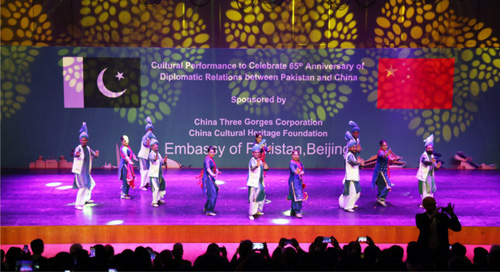Hafsa Mustansar
CULTURAL ties are a considerable source of regional stabilization since ancient times. For any country, cultural ties are a source of economic as well as social development. The region of South Asia has immense scope in establishing the coordination among regional countries due to having shared history. Since the time of antiquity, this region has crossroad linkages mainly ancient silk route (now Karakoram Highway), Khunjerab Pass, Wakhan Corridor and many more. China-Pakistan Economic Corridors (CPEC) , a flagship project of China’s Belt and Road Initiative (BRI), has a great potential for not only strengthening the cultural ties between Pakistan and China but also with other regional countries.
The CPEC has the motto of regional connectivity by improving all means of transportation, infrastructure and enhancement of cultural and academic knowledge for the aspirations of global harmony and development. It is not merely an economic booster for Pakistan; it has also insight to give opportunities to the people of different continents for sharing cultural knowledge. Under the BRI, China aspires to enhance cultural ties among countries in the South Asian region, Central Asia, West Asia and other adjacent regions Middle East and Africa. Without cultural harmony and understanding at people-to-people levels, the regional connectivity and economic cooperation would not bear the fruits.
The geostrategic significance of Pakistan is linked to its landscape and location. This significance becomes more profound because the landscape had one of the first urban civilizations. This makes Pakistan a land of great historical heritage. Being a land of prehistoric, proto-historic and historic monuments, it offers great potential of cultural tourism. Pakistan’s cultural heritage comprises diverse culture and multi-ethnic groups. In this respect, there is a great potential of expanding tourism in Pakistan along the CPEC route which has several historic and religious places.
Ancient Indian subcontinent now Pakistan and India still have a greater amount of Buddhist sites that under the umbrella of CPEC may achieve global prominence and attract the Buddhist people from across the world if properly preserved by the concerned authorities. To make collaborations based on cultural ties; this idea would play a vital role in understanding the cultural heritage of both countries, their food recognition, their traditions, rituals and living style that are main ingredient of multiculturalism. In this connection, people to people contact is necessary that would lead towards the understanding of multicultural phenomena. Under the guise of CPEC, the creation of multicultural phenomena would be appreciated.
As the people of China have great aspirations towards raising the tourism industry, protected their tourists sites in their region. To make harmony amongst the different countries of world cultural education is very much important. After the establishment of CPEC, a plethora of Pakistani people is learning Chinese language to excel in the peak of CPEC. Language is the nucleus of any culture, by knowing the language of other cultures one can easily know the cultural traditions of others. Learning the language of other countries is the main step towards strengthening cultural ties with that country.
Pakistan and China both have a glorious history of friendship. Therefore, they are recognized as iron brothers. For China, Pakistan has great potential of religious tourism. Pakistan has the largest Buddhist monastery of South Asia in Taxila, which is known as Dharmarajika stupa and monastery. Other than this, Pakistan has Buddhist stupas and monasteries in abundance along the historical routes and sites of the Gandhara region. These Buddhist sites are not preserved due to having no awareness about cultural heritage in Pakistan. The field of cultural heritage is wholly neglected by the authorities of Pakistan. Moreover, if the Buddhist sites in Pakistan are preserved, the move can create a possibility of opening up the world largest religious tourism.
In the light of UK Travel advisory, that has changed and allowed their citizens to visit Northern Areas of Pakistan through road due to improved security situations. After the comprehensive review of Pakistan’s situation, they announced to visit Pakistan without any danger. Similarly, the USA in its revised advisory also acknowledges the improved security situation of Pakistan. On 31 January 2020, Pakistan’s Foreign Office welcomed revised US travel advisory in which US State Department acknowledged that Pakistan’s security situation has improved. Furthermore, in recent months Pakistan has been declared one of the top travel destinations for 2020 by the major travel magazines such as Conde Nast traveller, and Forbes magazine.
Concerning cultural tourism, Pakistan’s romance is timeless. It started from the ruins of Mohenjo-Daro and continues with Mughal’s historical monuments and ends with British colonial period expansions. Government of Pakistan with collaborating the Chinese divert their interests on cultural heritage promotion that would lead to economic prosperity in the region. It is high time for Pakistan and China to give due attention to promote cultural heritage or religious tourism through their projects which has the potential to uplift socio-economic development. It may also help in building a soft image of Pakistan and China.









